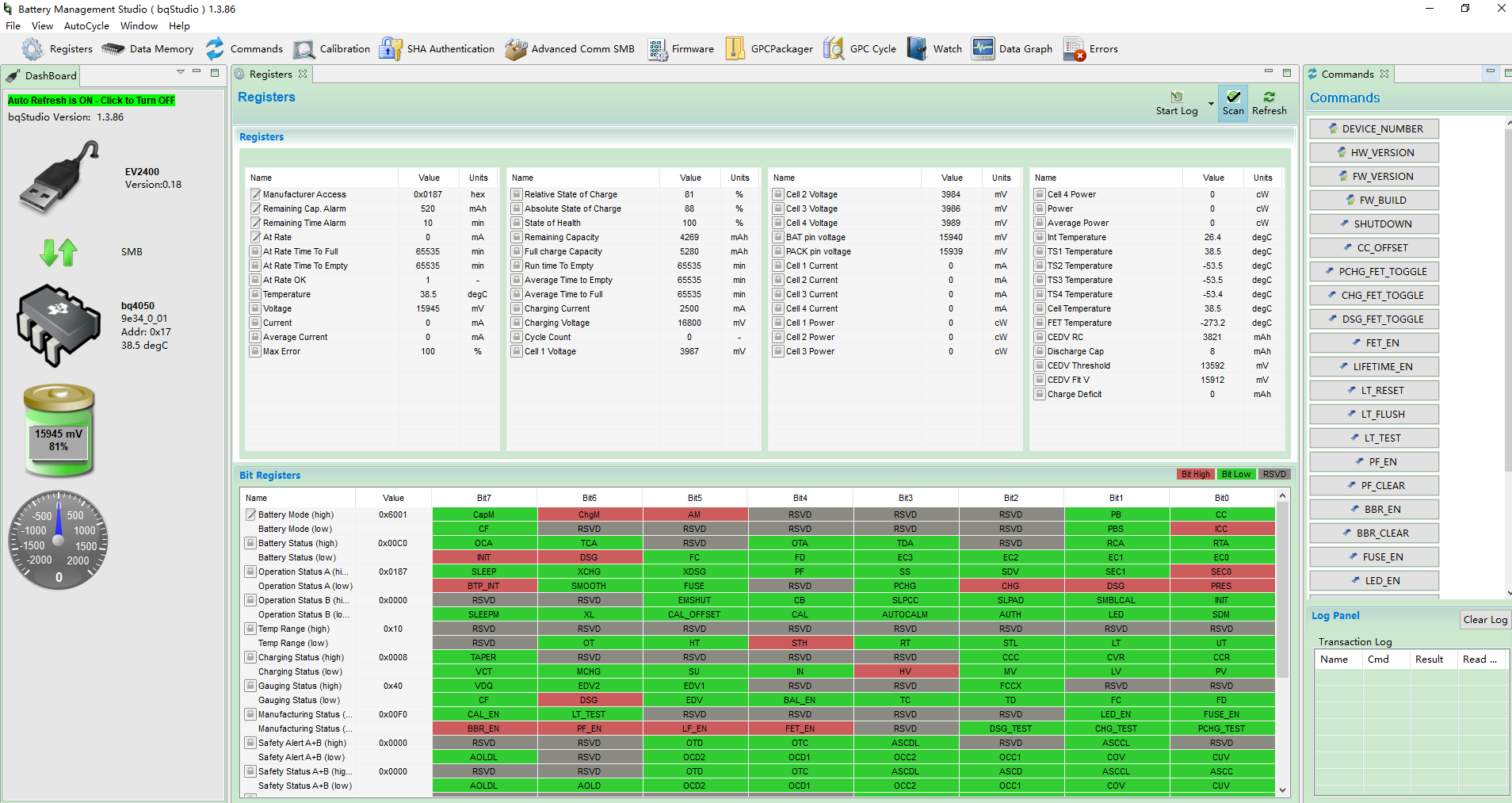Other Parts Discussed in Thread: BQSTUDIO, EV2400
HI
-
I'm testing the "SelfDischarge" function. There is a problem,"Ignore_sd" is set 0,"selfdischarge rate" 0.2%/day.The battery pack was left for a week at room temperature, but there was no change in SOC. CEDV RC is reduced, at this time I cancel the smooth function, the SOC will be reduced (reduced to CEDV RC), why does the SOC remain unchanged after standing for a week under the smooth function.Or what should i do to use "selfdischarge" to reduce SOC in "smooth" .


 Hello Keller,
Hello Keller,